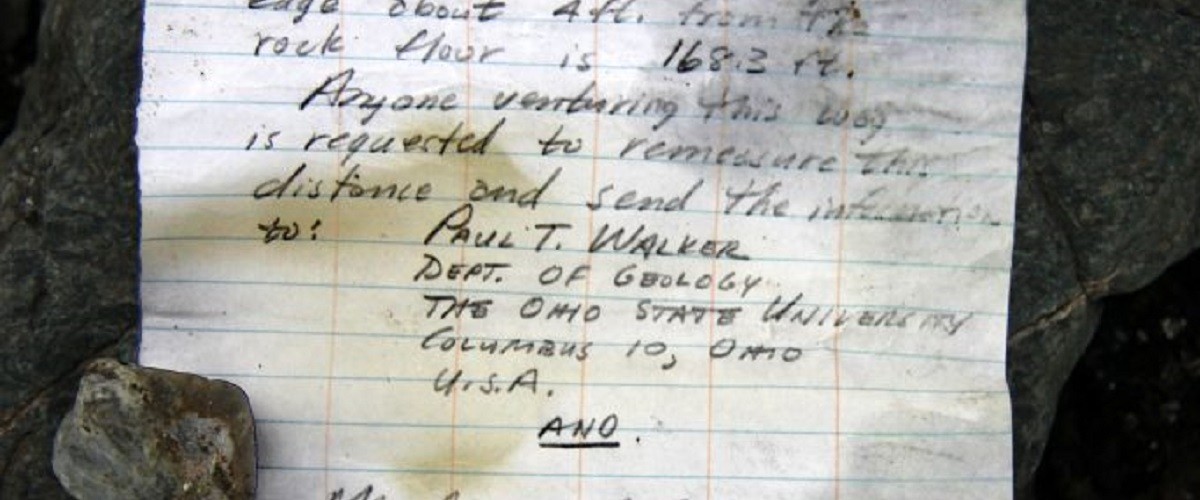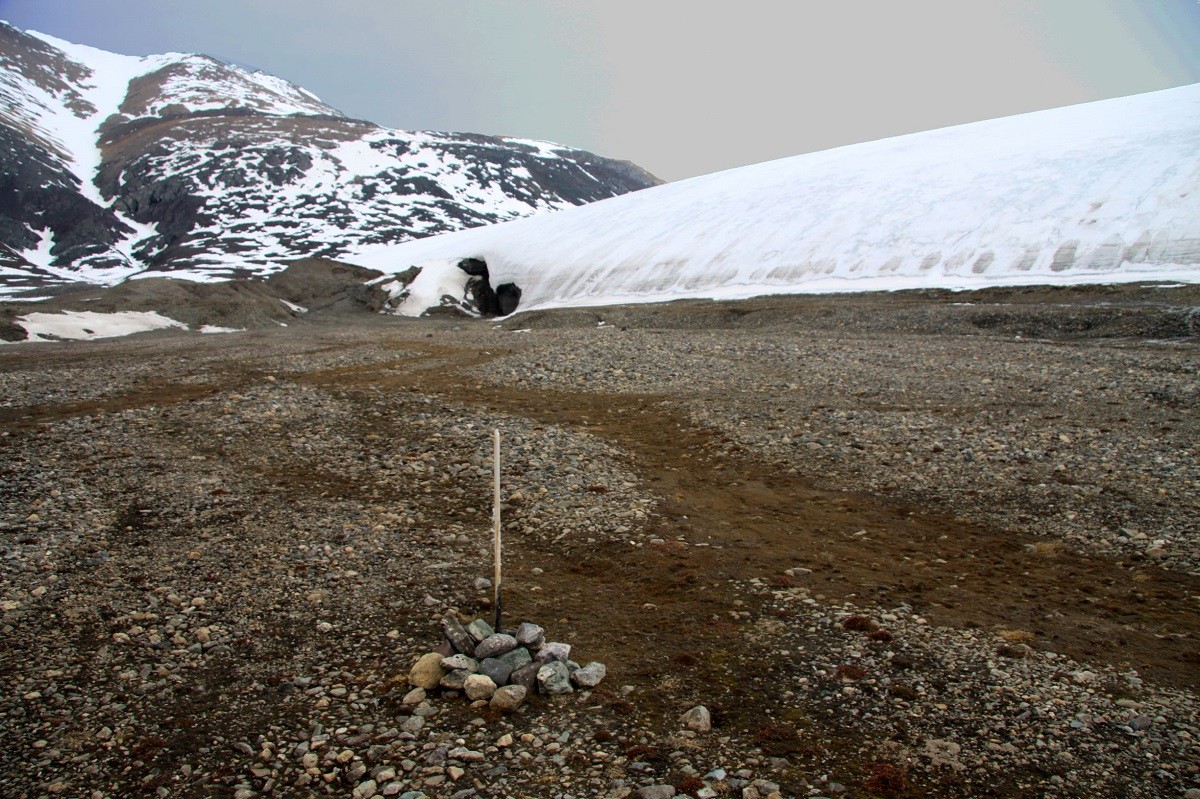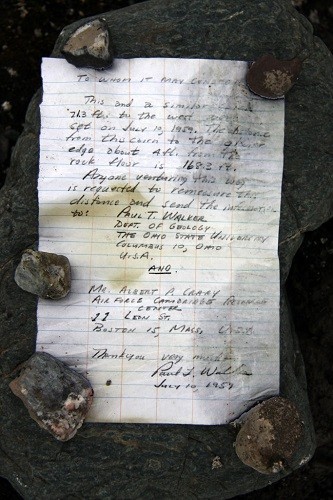









To Whom It May Concern
This and a similar cairn 21.3 feet to the west were set on July 10, 1959. The distance from this cairn to the glacier edge about 4ft from the rock floor is 168.3 ft.
Anyone venturing this way is requested to remeasure this distance and send the information to:
Paul T. Walker
Dept of geology
The Ohio State University
Columbus 10, Ohio USA
and
Mr. Albert P. Crary
Air Force Cambridge Centre
11 Leon Street
Boston 15, MASS, USA
Thank you very much
Paul Walker
10 July, 1959
Denis Sarrazin, CEN, Université Laval
In 2013, researchers from Université Laval in Quebec visited a small, uninhabited island
in the Canadian Arctic. Located on the northernmost tip of Canada in the Nunavut
territories, Ward Hunt Island is less 750km from the North Pole. The island has a glacier
that flows down to an ice shelf on the ocean’s surface, the largest in the Arctic. Climate
scientists had been observing the island closely since 2002, when the Ward Hunt ice
shelf split in two; studies later revealed the entire shelf was laced with deep,
multifaceted cracks.
During the field-trip in 2013, researchers made an unexpected discovery: buried
beneath a man-made pile of stones (a cairn), somebody had placed a bottle. Inside that
bottle was a message, written over fifty years ago, by a geologist named Paul T. Walker.
When visiting the island in June 1959, Walker and his colleague the polar geophysicist
Albert P. Crary – who had impressively reached the North Pole in 1952 – had built the
cairn in order to document the distance to a nearby glacier. The note contained those
measurements, and left instructions for anyone uncovering the bottle to make the
measurements again, with a return address.
Denis Sarrazin, CEN, Université Laval
Sadly, Walker died from a brain seizure several months after he left the
island. Fifty-four years later, Laval researchers followed his instructions – with alarming
results. They found that the gap between the cairn and glacier had grown significantly
since 1959; Laval’s new measurements demonstrated the Ward Island glacier had
shrunk by over 200 feet.
